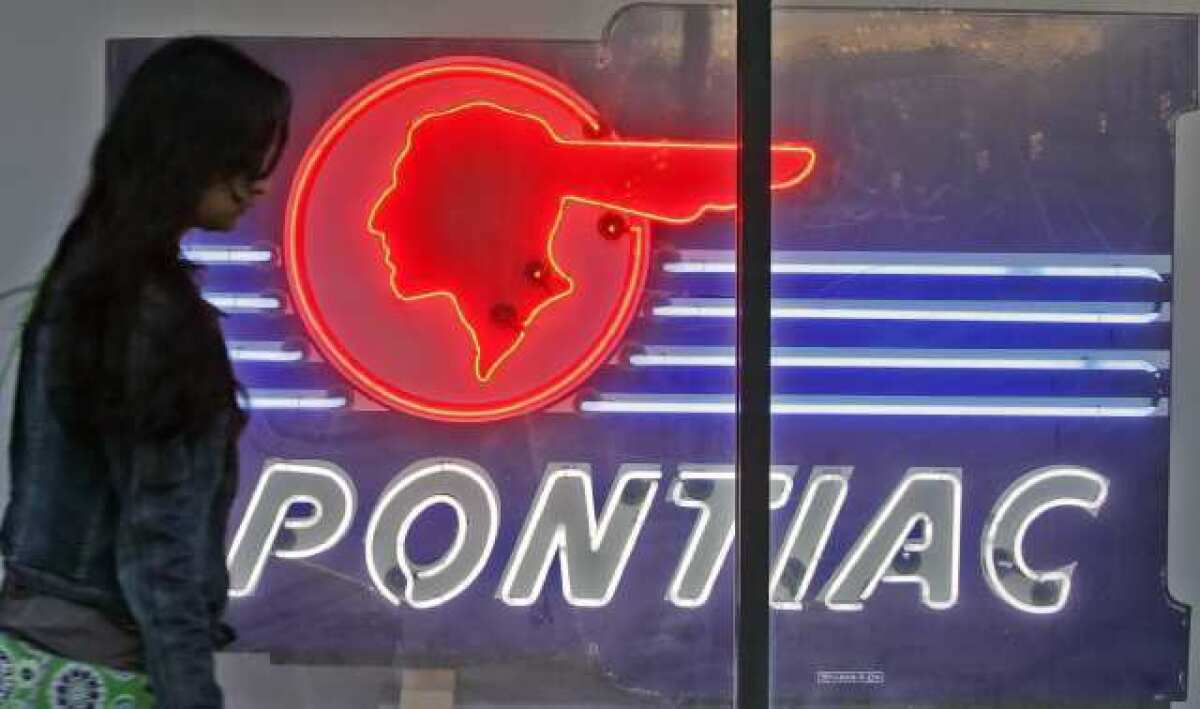Neon aficionado to showcase his expertise at Glendale event

- Share via
It’s a safe bet that most of us don’t drive at night the same way that Eric Lynxwiler does.
Sure, we all perambulate in one kind of vehicle or another, in a more-or-less legal manner. But the 37-year-old Lynxwiler has a passion and a skill set that sets him apart. Lynxwiler is one of our most informed and discerning urban archaeologists. He searches out neon signs in the Southern California night, evaluating and appreciating them in a way that very few people are able.
The graphic designer and art director’s name is known to but a few. But for those who have been lucky enough to find a seat on one of the many double-decker bus tours that Lynxwiler has conducted for the Museum of Neon Art in the last 13 years, you know what an informative and entertaining historian/raconteur he is.
He’s one of those rare specialists who can outline his subjects in perspectives both fun and educational. Coming away from a Lynxwiler talk, one gets the grudging impression that maybe there is a reason to stay in Los Angeles after all and grasp, even celebrate, this crumbling, fiscally snake-bitten town.
Lynxwiler will speak and provide a slideshow on L.A. neon at the Glendale Central Library Thursday night.
L.A.’s history with neon is long and deep. The visionary L.A. car dealer and broadcast pioneer Earl C. Anthony first imported it to America in 1923. After a Paris sojourn, he returned with two signs that quickly set his Packard dealership apart from other businesses.
In time, neon became an inextricable part of cities in the American night. From glittering pagodas in Chinatown to gaudily colored Googie restaurants to a dripping faucet above a plumbing shop — neon has helped define our sense of the SoCal landscape.
“Neon is valuable,” Lynxwiler maintains. “It informs us and, in the best examples, does it in an interesting way. A diver jack-knifing on a motel’s neon sign tells us that there’s a pool. But it can also be aesthetically pleasing.
“The twin dragons on the Chinese Theatre in Hollywood and the sign for Pann’s coffee shop in Culver City are pleasing and stimulating to the eye. Older signs are historic and can tell us something about an earlier way of life. A motel sign with ‘T-V’ on it lets us know that the rooms had televisions, before we called them TVs.
“The sign for the El Gordo restaurant in Alhambra pictured a wonderful, round Mexican guy in a serape and sandals, with a donkey and nearby cactus. The sign let you know that they were proud of their steaks, which were touted as ‘BEEG’ and ‘THEEK.’ That massive sign is about 7 feet tall and 18 feet long, and it’s one we rescued for MONA.”
MONA closed its facility in downtown L.A. in 2011. The Glendale MONA building will be the centerpiece of the coming cultural arts district, bordered on the south by Colorado Boulevard and on the north by the Alex Theatre.
MONA’s executive director, Kim Koga, said a Glendale Neon Cruise in April was a success.
“We’ll have another one in October and, like the first, it will take in the glorious Alex Theatre neon. The new building is moving along and we project a reopening sometime in 2014,” Koga said. “We’re excited about being part of the arts in Glendale.”
Over the years, the museum has managed to salvage several other important pieces of neon.
“Mann’s Chinese Theatre had these great green dragons dating back to the late ’50s,” Lynxwiler recalled.
In 2001, the theater building was renovated back to its original 1920s look, and so MONA reps asked for the dragons.
“Paramount Pictures has controlling interest in the company and wouldn’t give them up,” Lynxwiler said. Instead, “they were dumped in an open-air storage lot off the [Golden State (5) freeway] in Glendale, where they were rusting, and set to be picked up for scrap. We snagged them, but now MONA is stuck with the bill for refurbishing what we should have had in 2001.”
Lynxwiler is deeply invested in the metal boxes with gas-filled glass tubing, and wants to share his enthusiasm.
“They’re a big part of our urban environment, and I want to maintain it,” he said. “They’re also part of our historic heritage and, in a way, they belong to all of us. I want people to give a damn about their environment.”
---
Eric Lynxwiler
When: 7 p.m., Thursday, July 26
Where: Glendale Central Library Auditorium, 222 E. Harvard Ave., Glendale, (818) 548-2024